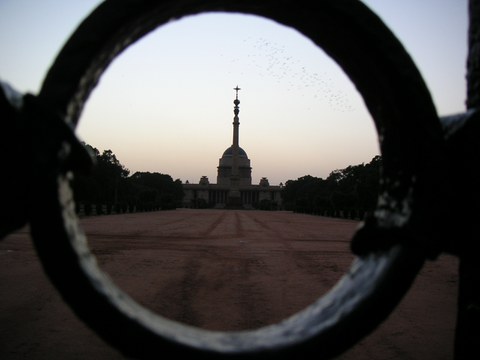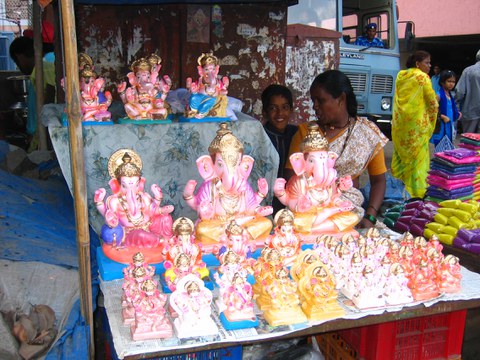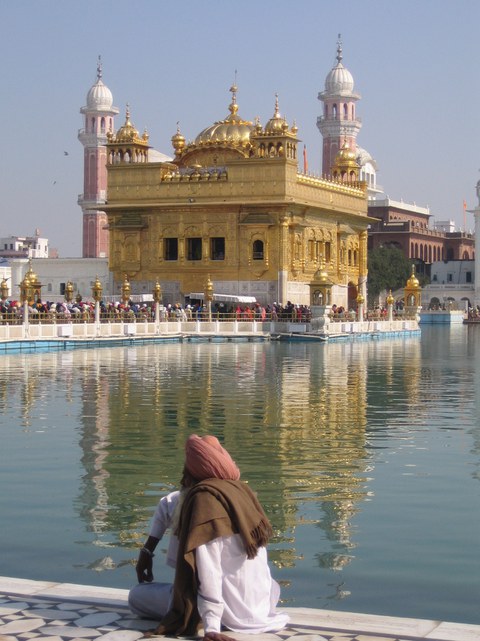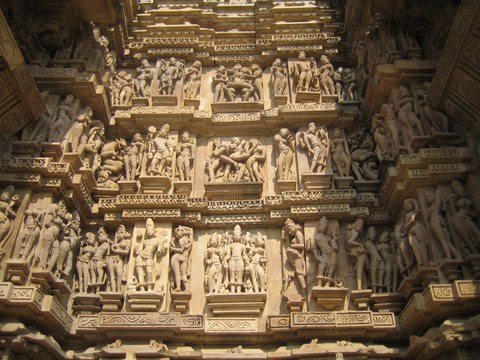Partnerland des Monats November 2020: Indien
Wie soll man Indien zusammenfassen? Das bevölkerungsreichste Land und die größte Demokratie der Welt ist unglaublich vielseitig, hat eine sehr lange Geschichte und brachte mehrere Weltreligionen hervor. Yoga, Kolonialvergangenheit, Bollywood, Kastensystem, Curry, bunte Saris, ... alles Schlagwörter, die viele mit Indien verbinden, die dieses Land vieler Gegensätze aber nicht mal annähernd beschreiben.
Mit der Aktion "Partnerland des Monats" richten wir den Scheinwerfer auf die große Vielfalt der Länder, Regionen und Partneruniversitäten der TU Dresden, in denen unsere Studierenden ein Auslandssemester verbringen können.
Inhaltsverzeichnis
Allgemeine Zahlen und Fakten zu Indien
Hauptstadt: Neu Delhi
Einwohner: 1,47 Milliarden (2025)
Amtssprache: Hindi und Englisch; 21 weitere, offiziell anerkannte Sprachen dienen auf regionaler Ebene teils als Amtssprachen (z.B. Gujarati, Tamil und Urdu)
Nationalfeiertage: 26. Januar (Tag der Republik), 15. August (Unabhängigkeitstag),
2. Oktober (Gandhi Jayanti)
Währung: Rupie (INR)
Weitere Zahlen, Fakten und Infos findest du bei Wikipedia, beim Deutschen Akademischen Austauschdienst (DAAD) oder z.B. Incredible India.
Kleiner Sprachexkurs Hindi
- Hallo - नमस्ते Namaste
- Wie geht’s? – क्या हाल है? Kya haal hai? (umgangssprachlich); oder आप कैसे हैं? Aap kaise hain? (höflich)
-
Mein Name ist … - मेरा नाम ... है. Mera naam ... hai.
-
Danke - धन्यवाद Dhanyavaad
Eine kostenlose Einführung für Hindi findet ihr bei merahindi.com. Auch die Devanagari-Schrift wird dort gelehrt.
Aber keine Angst, die meisten Angebote an den Universitäten in Indien sind englischsprachig und man kommt damit auch im Alltag sehr gut zurecht, sofern man ein paar Fetzen der lokalen Sprache beherrscht und v.a. auch die nonverbalen Kommunikationsmitteln gut zu nutzen weiß ;)
Wusstest Du schon, dass ....?
- Indien mit 20-40% der Bevölkerung den höchsten Anteil von Vegetarier:innen weltweit hat? Die Tradition ist religiösen Ursprungs und im Land unterschiedlich verteilt: So gibt es im Nordwesten deutlich mehr Vegetarier:innen als im Südosten, und tendenziell ernähren sich wohlhabendere Familien eher vegetarisch als ärmere. Darüber hinaus gibt es verschiedene Ausprägungen (ohne oder mit Ei, vegan, ...). Abgepackte Lebensmittel sind in der Regel mit grünen oder roten Punkten markiert, um die Auswahl entsprechend der eigenen Gepflogenheiten zu erleichtern.
- die Anzahl der Menschen, die in Indien täglich mit dem Zug fährt, ungefähr der Gesamtbevölkerung von Australien entspricht? Mit 7.325 Bahnhöfen und 13.198 Zügen (2024) ist das indische Eisenbahnsystem das größte in Asien.
-
das Wort Shampoo vom Hindi-Wort champo abstammt und Massage bedeutet? Andere aus indischen Sprachen entlehnte Wörter (teilweise mit Umwegen über andere Sprachen) im Deutschen sind z.B. Veranda, Bungalow, Dschungel, Kajal, Ingwer, Zucker, Orange oder Punsch.
-
das Taj Mahal zwar einer Moschee ähnelt, aber gar keine ist? Das moderne Weltwunder ist ein Mausoleum, 1631 errichtet zum Gedenken an Mumtaz Mahal, die große Liebe des Großmoguls Shah Jahan.
Kooperationen mit der TU Dresden
Eine Übersicht über alle Kooperationen der TU Dresden gibt es in unserer Datenbank. Dort kannst du auch in den Erfahrungsberichten bisheriger Austauschstudierender stöbern. Es lohnt sich außerdem oft, in der eigenen Fakultät Professor:innen zu fragen, die direkte Kontakte zur gewünschten Partneruni haben.
Unsere indische Partneruniversität
- Indian Institute of Technology Madras (IIT Madras) in Chennai
- fächerübergreifender Austausch mit TUDweltweit
- für die Studiengänge Informatik sowie Elektrotechnik und Informationstechnik ist eine Förderung über Erasmus+ (weltweit) möglich
Don't miss...
Den Goldenen Tempel in Amritsar: Hari Mandir ist das höchste Heiligtum der Sikhs in Amritsar im indischen Bundesstaat Punjab. Täglich werden hier bis zu 100.000 Personen jeglicher Herkunft und Religion kostenlos bekocht. Die Atmosphäre ist einzigartig.
das Fort von Jodhpur und die Blue City: Hoch oben thront das Fort von Jodhpur über der Stadt und bietet eine sehr gute (Audio)tour, um ganz in die Geschichte eintauchen zu können. Es bietet darüber hinaus einen fantastischen Blick über die Blue City.
die Tempelanlagen von Kajuraho: Etwas abseits von den gängigen Reiserouten in Indien liegen die Tempelanlagen von Kajuraho, die deswegen auch erst 1830 wieder entdeckt wurden. Heute gehören sie zum UNESCO Weltkulturerbe.
das Dakshinachitra Museum in Chennai: Ein Freiluftmuseum, wo das traditionelle Leben Südindiens lebendig wird. Hier kann man eintauchen in die Architektur, die Kunst, das Handwerk und Brauchtümber südindischer Traditionen. Außerdem kann man Handwerkern und Künstlern bei der Arbeit zuschauen und auch selbst tätig werden.
einen (geführten) Ausflug ins Himalayagebirge: Viele Pilgertouren führen durch die Gebirgszüge und bieten nicht nur anstrengende Bergwanderungen und atemberaubende Ausblicke, sondern auch einen fantastischen Einblick in die Geschichte des Hinduismus.
[A/N: Wir hätten noch ungefähr 50 weitere Tipps, denn Indien ist groß und vielfältig. Langweilig wird einem da nie und jeden Tag gibt es etwas neues zu entdecken und zu lernen.]
Wer schon einen Vorgeschmack erhalten will, dem sei die Indian Association Dresden empfohlen, die regelmäßig Veranstaltungen in Dresden organisiert und z.B. auch Diwali und Holi mit euch feiert. Auch Cricket könnt ihr in Dresden ausprobieren.
Lasst uns kochen...
Ein typisches Nationalgericht für Indien zu benennen ist angesichts der Größe des Landes, der Vielfalt und den sehr unterschiedlichen Kulturen äußerst schwierig, um nicht zu sagen beinahe unmöglich. Aber sicher ist, dass es überall sehr leckere Gerichte gibt und bestimmt jeder sein persönliches Lieblingsgericht mit nach Hause bringen wird! Das "typische" Curry ist übrigens ein Begriff den die Briten während ihrer Kolonialherrschaft prägten. In Indien tragen die Gerichte eher den Namen der Zutaten (z.B. Alu Gobhi für ein "Curry" mit Kartoffeln und Blumenkohl), auch wenn natürlich jeder weiß, was gemeint ist.
Wir haben es uns trotzdem nicht nehmen lassen, euch zwei unserer Lieblingsgerichte herauszusuchen: Mattar Paneer (Erbsen mit Käse). Den Paneer könnt ihr dabei selbst herstellen oder auch kaufen. Und einen Klassiker: Dal Tadka. "Nur" ein Linsengericht, aber ein einzigartiger Geschmack, wenn es gut gekocht wurde.
*Bei Zutatenmangel in eurer Küche werdet ihr in Dresdens größeren Asiamärkten ohne Probleme fündig ;)
Kontakt und weitere Ansprechpersonen
Hattest du eine tolle Zeit in Indien? Erfolgreich ein Auslandssemester in Pune verbracht? Was ist dein Lieblingsgericht aus Indien? Wieviele Bollywoodfilme hast du geschaut? Hast du Tipps für Orte und Erlebnisse, die man nicht missen sollte? Gern teilen wir auch deine Erfahrungen – hier, über Social Media oder auch, wenn du Lust hast, bei Infoveranstaltungen mit anderen TUD-Studierenden. Melde dich bei uns:
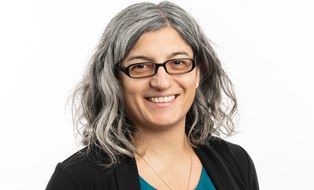 © Sven Ellger/TUD
© Sven Ellger/TUD
Beratung zum Studium im Ausland
NameFrau Federica Serra
Infocenter / TUD weltweit: Amerika, Australien und UK / PROMOS
Eine verschlüsselte E-Mail über das SecureMail-Portal versenden (nur für TUD-externe Personen).
Besuchsadresse:
Fritz Foerster Bau, Büro 156 Mommsenstraße 6
01069 Dresden
Postadresse:
Technische Universität Dresden International Office
01062 Dresden
Sprechzeiten:
- Dienstag:
- 09:30 - 11:30
- 12:30 - 14:30
- Donnerstag:
- 09:30 - 11:30
Bitte im SCS (FOE UG) anmelden.
Du möchtest dich aus erster Hand informieren?
Du willst mehr über Indien erfahren? Frag die Alumnibotschafter:innen der TU Dresden, die in vielen Ländern der Welt aktiv sind. Sie geben dir gerne Tipps und Hinweise für deinen Aufenthalt.
Kontaktieren ist ganz einfach: Auf der interaktiven Weltkarte zeigen Markierungspunkte die Städte an, in denen die Alumnibotschafter:innen leben. Zu jeder Person ist ein Kurzprofil mit Kontaktinformationen hinterlegt.
Partnerländer Archiv
Hast du ein Partnerland verpasst? Kein Problem! Hier sammeln wir alle Seiten für dich zum Nachlesen.
|
Europa (Erasmus+) |
|
|
Afrika |
|
|
Amerika |
|
|
Asien |
|
|
Australien und Ozeanien |
|

